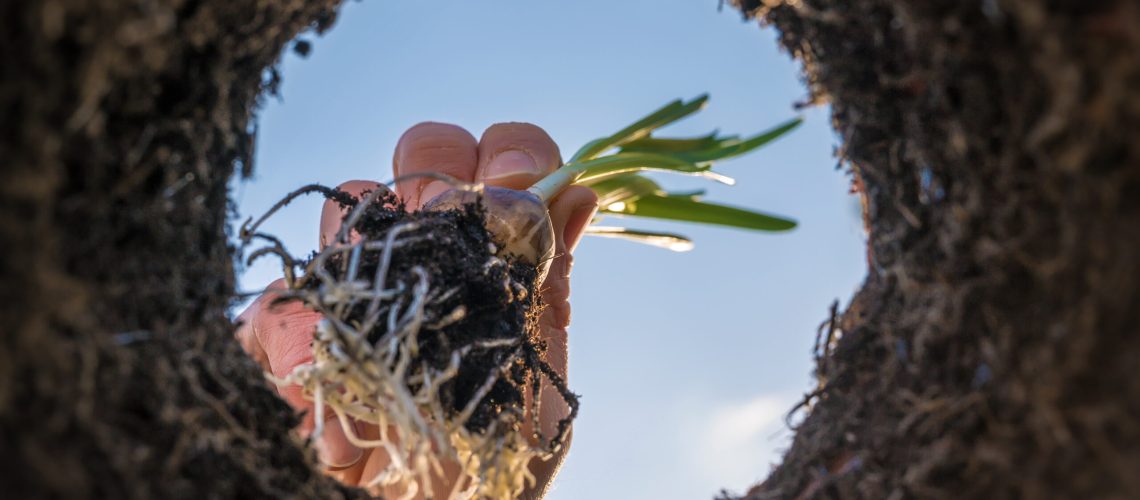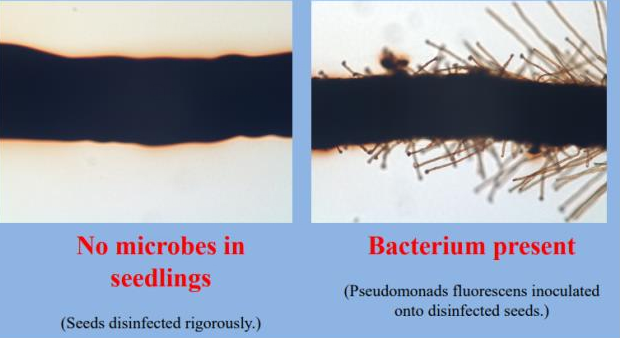
UPDATE: Dr. White sat down with Dr. Fitzpatrick and Jeff Lowenfels to discuss rhizophagy. Click here to view the webinar. (Jan. 15, 2021)
A summary of James F. White’s presentation at BioFarm, 2020 (Nov. 12, 2020).
The rhizophagy cycle is an amazing process recently discovered by James White’s laboratory at the University of New Jersey, by which root tips “ingest” bacteria and absorb nitrogen and phosphorus and other nutrients from them.
The microbes pictured here in roots are called endophytes because they can live inside plants. The bacteria are attracted to the root tip by root exudates. They then enter the root where the cell walls are dissolved using superoxide, allowing nutrients to leak out to the plant. But the plant does not kill the microbes instead the microbes stimulate the formation of root hairs, which are escape routes for the microbes.
After ejection from root hair tips, bacterial cell walls re-form. The bacteria fatten up and are soon ready to acquire soil nutrients and become another meal for the plant.
Source: How Plants ‘Farm’ Soil Microbes and Endophytes in Roots
Not only does rhizophagy provide mineral nutrients, it is also the stimulus for formation of root hairs, which are critical to the establishment of a healthy root as can be seen in this photo of a plant root with and without endophytes.



One thought on “How do plants farm soil microbes?”
Comments are closed.